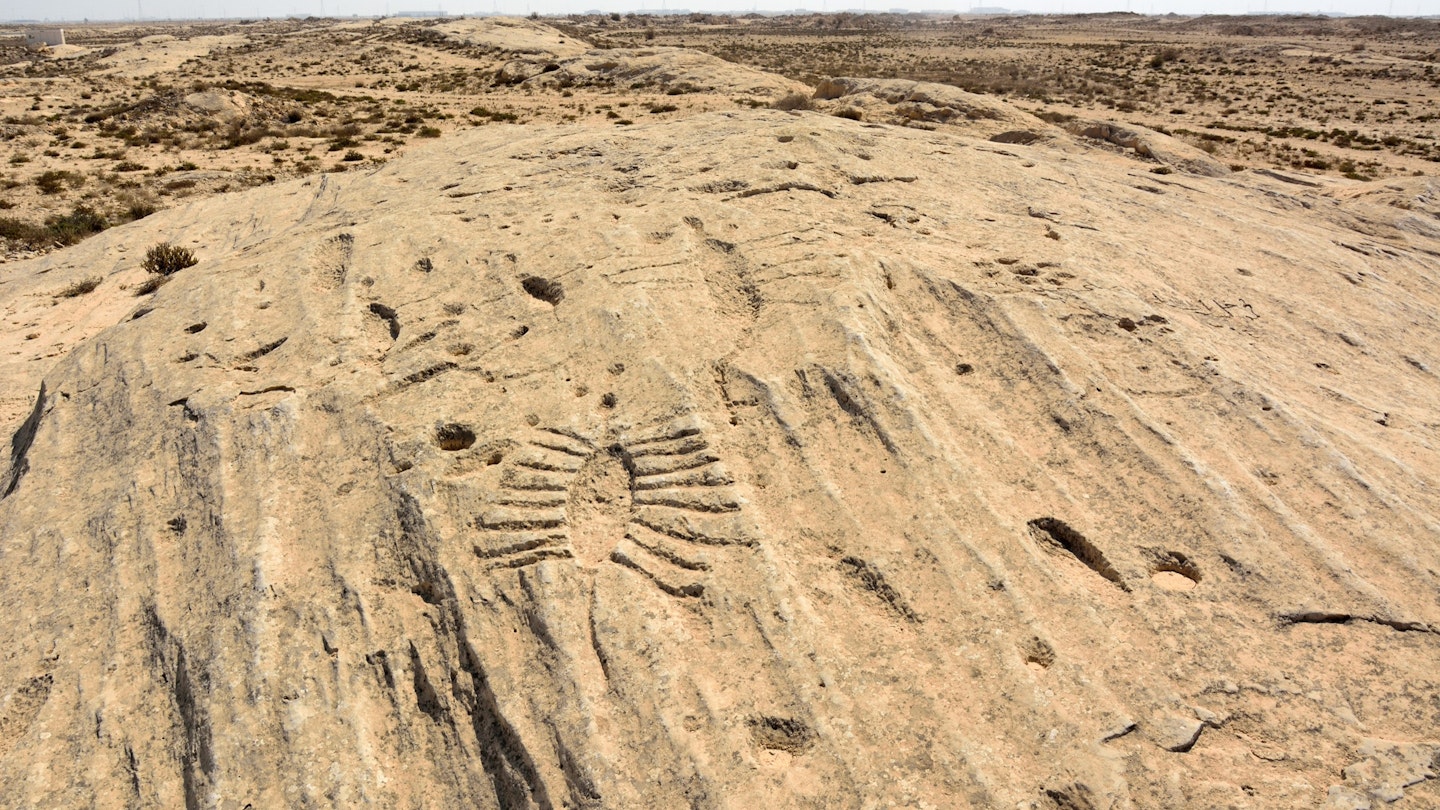Discover the Al Jassasiya Rock Carvings in Qatar
Qatar, although relatively new as a nation since its independence fifty years ago, boasts a rich history that stretches back thousands of years. This small region in the Arabian Peninsula has been home to civilizations for millennia, with mentions dating back to the 5th century BC by Greek historian Herodotus.
While much of Qatar’s ancient history is based on oral traditions, significant evidence of early habitation has been found, including flint spearheads and pottery shards near Umm Salal Mohammed dating back to 4000 BC. However, like many historic nomadic areas, comprehensive written records are scarce.
Al Jassasiya: A Fascinating Historical Site
Located just an hour from downtown Doha, the Al Jassasiya rock carvings present a captivating narrative through their petroglyphs. This site features approximately 900 images spread over an area of 2300 feet (700m) and is regarded as the most extensive collection of petroglyphs in the Gulf region.

Mysterious Symbols and Their Significance
The rock carvings illustrate vital aspects of life, such as footmarks and various animals including fish and ostriches. A notable feature is the images of dhows—traditional vessels still utilized today. These vessels were historically significant for transporting goods, fishing, and pearl diving, which was crucial for the Gulf’s economy prior to the discovery of oil.
Moreover, other carvings include shallow pit-like features connected to channels leading toward the sea. Their purpose remains unclear, but they contribute to the site’s intrigue.

Dating the Petroglyphs
Determining the age of these carvings remains one of the greatest challenges. While some theories suggest they may date back to the Neolithic era, approximately 8000 BC, most researchers propose a timeline ranging from the 3rd century BC to between the 8th and 10th centuries AD. Due to their unique design elements and concentrated appearance, comparing these carvings to others in the region has proven difficult.
Interestingly, a mix of patterns suggests that these carvings were made at different times in history. This tantalizing aspect continues to fuel archaeological interest.

Ancient Life and Cultural Insights
The mysterious shallow pits at the Al Jassasiya site could potentially hold significant meanings. They may have been crafted for holding pearls or might reference an ancient board game like mancala, which has historical ties dating back to 700 AD. In Qatar, this game is still known as Al Haloosa or Al Huwaila.
Moreover, artifacts excavated in the area hint at ancient settlements, showcasing pottery from the Ubaid period (6500 BC to 3800 BC). This period marked the evolution of community living, characterized by irrigation farming, animal domestication, and fishing—elements foundational to early urban civilization.
The artifacts discovered from Al Jassasiya are currently on display in Gallery 3 at the National Museum of Qatar, providing a window into the life and society that once thrived in this region.

Visiting Al Jassasiya
For centuries, the Al Jassasiya Rock Carvings remained obscure until their rediscovery in 1957. Comprehensive research only began in 1974, and access remained limited for many years. Fortunately, the site is now open to the public and protected by law.
Visitors can explore the petroglyphs under the guidance of a local tour guide authorized to escort groups into this historic area. Engaging with a knowledgeable guide can enrich your understanding of the site’s significance and cultural relevance.
Moreover, tourists are encouraged to visit the captivating Qatar Museums, which offers a Culture Pass membership allowing access to various archaeological sites, including Al Jassasiya, through the museum’s Atharna program. This experience provides insight into Qatar’s archaeological heritage and the civilizations that once flourished in the area.

Further Exploration
A visit to the Al Jassasiya rock carvings complements a trip to the National Museum of Qatar. Here, guests can gain deeper insights into the petroglyphs and their historical context. The museum features large replicas of the carvings, providing a closer look at these ancient artworks.
Visitors to Al Jassasiya should remember to respect the site by not touching or walking on the petroglyphs and refraining from removing any items from this important archaeological location. Your memories and photographs coupled with a newfound understanding of Qatar’s rich history will be well worth your visit.





